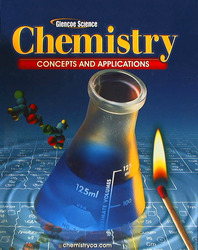EXPLORING NANOTECHNOLOGY Introduction In this WebQuest, students do some Internet research on the new science of nanotechnology. They learn what nanotechnology is and how scientists think it will work. They find
out what nanobots are, what they are made out of, and how they might work to manipulate individual atoms and molecules. They discover what nanotechnology could be used for, and
how it may cause a revolution in the manufacturing and medical fields. Finally, they answer some questions about nanotechnology, based on their Internet research. Top
Task While students are doing their Internet research, they will try to answer the set of questions given. Each web site has some of the answers to the questions, but several of
the questions require information from two or more of the web sites. Students should be able to compile information to answer the questions as they read through each web site.
Although several of the web sites give detailed information about nanotechnology, students are not expected to become experts in this field. Rather, they should be able to gain
a general understanding of what nanotechnology is and how it may be applied. Objectives - Define nanotechnology.
- Describe the purpose of nanotechnology.
- List processes or areas in which nanotechnology could be used.
Top
Resources Students will use the Internet links given to find out all about nanotechnology. They will learn about the reasons scientists are interested in nanotechnology, and find out
what the uses of nanotechnology might be in the future. They will learn about nanobots, including the materials they may be made of and how they will work. Students should be
able to make a list for question 5 without your help. Top
Time 1 class period for research and answering the set of questions. Top
Process As students progress through the list of web sites, you may help them to focus on what they need to know to answer the questions given. Several of the web sites have links to
other web sites with relevant information. If time allows, you may want to allow students to explore this subject further. However, many of the links are to books that have been
published recently; these are not available online. Top
Evaluation
Click Here
for Rubric You may assign 10 points to each of the 5 questions given for a total of 50 possible points. Possible answers to the questions are given below, but students may include information
that differs from these answers. Evaluate their answers by visiting the web sites listed. You may rate the answer to each question by the following scale: Excellent – 9-10
points; Very Good – 7-8 points; Good – 5-6 points; Satisfactory – 3-4 points; Poor – 1-2 points; and Unsatisfactory – 0 points. Questions about Exploring Nanotechnology - A nanometer is one billionth of a meter, about 3 to 4 atoms wide.
- The primary goal of early nanotechnology is to produce the first nano-sized robot arm (nanobot) capable of manipulating atoms and molecules into a useful product or into
copies of itself.
- A nanobot is a tiny robot that is shorter than a hyphen and no wider than a period that is intended to be used as a microsurgical instrument or used to build other microdevices.
Scientists are experimenting with building microrobots of layers of polymer and gold. These nanobots will look like human arms. The polymer layers will absorb or shed ions,
causing them to swell or shrink, while the gold layers stay the same. The swelling or shrinking will result in movement of the robot joints. The ions will come from electric
charges applied to the nanobots.
- The arms of the nanobots will pick up individual atoms and molecules and place them precisely where they are wanted to build particular products, in a way similar to the
manner in which mRNA brings materials to ribosomes to make proteins in a living cell.
- Nanotechnology could be used: to manufacture self-assembling consumer goods; to make computers that are billions of times faster; to allow safe, affordable space travel;
to create food on a molecular basis; to reintroduce extinct or endangered plants and animals; to create self-assembling solar cells; to eliminate pollution; to clean up pollution;
in medical practices; and in other novel inventions. Accept any answers that students can support from their research.
Top
Conclusion Using information gathered from the Internet, students should be able to answer the questions given about nanotechnology. Students should be able to draw some conclusions about
the usefulness of nanotechnology as a result of their research, and be able to estimate how long it will be before the benefits of nanotechnology will be available to the general
public. What do students think nanotechnology could be used for in the future? Top
| 




